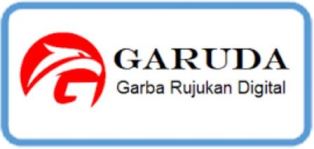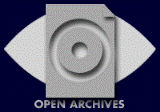Pengaruh Literasi Digital, Dan Internet Addiction Terhadap Online Learning, Dan Dampak Selanjutnya Terhadap Motivasi Belajar Mahasiswa Departemen Teknik Elektronika
 ), Dedy Irfan(3), Khairi Budayawan(4), Zulhendra Zulhendra(5),
), Dedy Irfan(3), Khairi Budayawan(4), Zulhendra Zulhendra(5), (1) Universitas Negeri Padang
(2) Universitas Negeri Padang
(3) Universitas Negeri Padang
(4) Universitas Negeri Padang
(5) Universitas Negeri Padang
 Corresponding Author
Corresponding Author
DOI : https://doi.org/10.24036/voteteknika.v10i4.119854
Full Text:
 Language : id
Language : id
Abstract
Pembelajaran online diterapkan oleh perguruan tinggi sebagai dampak dari penyebaran virus COVID-19 menjadi tantangan tersendiri bagi lembaga pendidikan. Revolusi industri 4.0 yang berkembang juga menjadi tantangan bagi lulusan untuk meningkatkan kemampuan individunya. Motivasi belajar mahasiswa dalam pembelajaran online menjadi acuan terpenting yang perlu diperhatikan. Metode analisis yang digunakan dalam menentukan apa saja yang mempengaruhi motivasi belajar mahasiswa adalah PLS-SEM. Pengambilan sampel dalam penelitian ini melalui metode Proportionate Stratified Random Sampling. Penelitian ini bertujuan untuk melihat pengaruh literasi digital dan internet addiction terhadap online learning¸serta dampaknya terhadap motivasi belajar. Subyek dalam penelitianmeruapakn mahasiswa departemen teknik elektronika yang mengikuti pembelajaran online sebanyak 229 mahasiswa. Hasil menunjukkan bahwa literasi digital berpengaruh signifikan terhadap online learning (66,3%), internet addiction berpengaruh signifikan terhadap online learning (22,6%), literasi digital berpengaruh signifikan terhadap motivasi belajar (34,9%), internet addiction berpengaruh signifikan terhadap motivasi belajar (49,6%), online learning serta berpengaruh signifikan terhadap motivasi belajar (15%). Literasi digital berpengaruh signifikan terhadap motivasi belajar melalui mediasi online learning (9,9%) dan internet addiction berpengaruh signifikan terhadap motivasi belajar melalui mediasi online learning (4%). Dengan hasil temuan ini, motivasi belajar mahasiswa dapat ditingkatkan dengan membatasi internet addiction dan meningkatkan literasi digital dalam mengumpulkan informasi-informasi.
Kata kunci: Literasi Digital, Internet Addiction, Online Learning, Motivasi Belajar, SEM
Online learning implemented by universities as a result of the spread of the COVID-19 virus is a challenge for educational institutions. The developing industrial revolution 4.0 is also a challenge for graduates to improve their abilities. Student learning motivation in online learning is the most important reference that needs to be considered. The analytical method used in determining what affects student learning motivation is PLS-SEM. Sampling in this study through the method of Proportionate Stratified Random Sampling. This study aims to examine the effect of digital literacy and internet addiction on online learning and their impact on learning motivation. The subjects in the study were students of the electronics engineering department who took part in online learning as many as 229 students. The results show that digital literacy has a significant effect on online learning (66.3%), internet addiction has a significant effect on online learning (22.6%), digital literacy has a significant effect on learning motivation (34.9%), internet addiction has a significant effect on learning motivation (49.6%), online learning and significant effect on learning motivation (15%). Digital literacy has a significant effect on learning motivation through online learning mediation (9.9%) and internet addiction has a significant effect on learning motivation through online learning mediation (4%). With these findings, students' learning motivation can be increased by limiting internet addiction and increasing digital literacy in gathering information.
Keywords: Digital literacy, Internet Addiction, Online Learning, Learning Motivation, SEM
References
W. Zendrato, “Gerakan Mencegah Daripada Mengobati Terhadap Pandemi Covid-19,” J. Educ. Dev., vol. 8, no. 2, pp. 242–248, 2020.
Nurkholis, “Dampak Pandemi Novel-Corona Virus Disiase ( Covid-19 ) Terhadap Psikologi Dan Pendidikan Serta Kebijakan Pemerintah,” Pgsd, vol. 6, no. 1, pp. 39–49, 2020.
W. W. N. Asy Syifa Dhewi, “Strategi Literasi Digital Sebagai Sarana Penguatan Berpikir Kritis Mahasiswa Peminatan Jurnalistik,” Pros. Semin. Nas. Pendidik. Sultan Agung, pp. 52–75, 2021.
M. Husin, Ganefri, Ambiyar, and Krismadinata, “Learning Styles Towards Entrepreneurship Learning Outcomes and Career Development: A Structural Equation Model Analysis,” vol. 7, no. 2, pp. 29–45, 2022, doi: https://doi.org/10.25217/ji.v7i2.2636.
G. P. Yustika and S. Iswati, “Digital Literacy in Formal Online Education: A Short Review,” Din. Pendidik., vol. 15, no. 1, pp. 66–76, 2020, doi: 10.15294/dp.v15i1.23779.
M. F. Rice and D. Zancanella, “Framing Policies and Procedures to Include Digital Literacies for Online Learning During and Beyond Crises,” J. Adolesc. Adult Lit., vol. 65, no. 2, pp. 183–188, 2021, doi: 10.1002/jaal.1194.
A. Jalil, T. Tohara, S. M. Shuhidan, F. Diana, S. Bahry, and M. Norazmi Bin Nordin, “Exploring Digital Literacy Strategies for Students with Special Educational Needs in the Digital Age,” Turkish J. Comput. Math. Educ., vol. 12, no. 9, pp. 3345–3358, 2021.
I. Blau, T. Shamir-Inbal, and O. Avdiel, “How does the pedagogical design of a technology-enhanced collaborative academic course promote digital literacies, self-regulation, and perceived learning of students?,” Internet High. Educ., vol. 45, no. June 2018, p. 100722, 2020, doi: 10.1016/j.iheduc.2019.100722.
A. Oke and F. A. P. Fernandes, “Innovations in teaching and learning: Exploring the perceptions of the education sector on the 4th industrial revolution (4IR),” J. Open Innov. Technol. Mark. Complex., vol. 6, no. 2, pp. 1–22, 2020, doi: 10.3390/JOITMC6020031.
[
A. H. Muhammad Arsyad, “VoteTEKNIKA,” J. Vocat. Tek. Elektron. dan Inform., vol. 9, no. 4, pp. 12–19, 2021, doi: https://doi.org/10.24036/voteteknika.v9i4.
R. D. Putri, A. Triaristina, and A. Wira, “Efektifitas Implementasi Video Conference Sebagai Media Pembelajaran Dimasa Pandemi P - ISSN : 2302-3295,” VoteTEKNIKA, vol. 10, no. 3, pp. 33–38, 2022, doi: https://doi.org/10.24036/voteteknika.v10i3.
E. Porat, I. Blau, and A. Barak, “Measuring digital literacies: Junior high-school students’ perceived competencies versus actual performance,” Comput. Educ., vol. 126, no. May 2017, pp. 23–36, 2018, doi: 10.1016/j.compedu.2018.06.030.
N. K. Sinha, P. Kumar, S. Kumar, and P. Priyadarshi, “Problematic Internet Use and Psychosocial Well-being: Role of Mindfulness Mediated by Self-Control and Negative Affect,” IIM Kozhikode Soc. Manag. Rev., vol. 10, no. 1, pp. 99–112, 2021, doi: 10.1177/2277975220965346.
S. M. Bae, “The influence of strain factors, social control factors, self-control and computer use on adolescent cyber delinquency: Korean National Panel Study,” Child. Youth Serv. Rev., vol. 78, no. February, pp. 74–80, 2017, doi: 10.1016/j.childyouth.2017.05.008.
C. Iordache, I. Mariën, and D. Baelden, “Developing digital skills and competences: A quick-scan analysis of 13 digital literacy models,” Ital. J. Sociol. Educ., vol. 9, no. 1, pp. 6–30, 2017, doi: 10.14658/pupj-ijse-2017-1-2.
I. Wayan Widana, “The Effect of Digital Literacy on the Ability of Teachers to Develop HOTS-based Assessment,” J. Phys. Conf. Ser., vol. 1503, no. 1, 2020, doi: 10.1088/1742-6596/1503/1/012045.
B. S. K. Chan, D. Churchill, and T. K. F. Chiu, “Digital Literacy Learning In Higher Education Through Digital Storytelling Approach,” J. Int. Educ. Res., vol. 13, no. 1, pp. 1–16, 2017, doi: 10.19030/jier.v13i1.9907.
M. Leaning, “An Approach to Digital Literacy through the Integration of Media and,” Media Commun., vol. 7, no. 2, pp. 4–13, 2019, doi: 10.17645/mac.v7i2.1931.
H. Y. S. Tsai, R. Shillair, and S. R. Cotten, “Social Support and Playing Around: An Examination of How Older Adults Acquire Digital Literacy with Tablet Computers,” J. Appl. Gerontol., vol. 36, no. 1, pp. 29–55, 2017, doi: 10.1177/0733464815609440.
Ł. Tomczyk, “Skills in the area of digital safety as a key component of digital literacy among teachers,” Educ. Inf. Technol., vol. 25, no. 1, pp. 471–486, 2020, doi: 10.1007/s10639-019-09980-6.
F. W. Paulus, S. Ohmann, A. von Gontard, and C. Popow, “Internet gaming disorder in children and adolescents: a systematic review,” Dev. Med. Child Neurol., vol. 60, no. 7, pp. 645–659, 2018, doi: 10.1111/dmcn.13754.
C. Coman, L. G. Țîru, L. Meseșan-Schmitz, C. Stanciu, and M. C. Bularca, “Online teaching and learning in higher education during the coronavirus pandemic: Students’ perspective,” Sustain., vol. 12, no. 24, pp. 1–22, 2020, doi: 10.3390/su122410367.
H. Baber, “Determinants of students’ perceived learning outcome and satisfaction in online learning during the pandemic of COVID19,” J. Educ. e-Learning Res., vol. 7, no. 3, pp. 285–292, 2020, doi: 10.20448/JOURNAL.509.2020.73.285.292.
M. Jang, M. Aavakare, S. Nikou, and S. Kim, “The impact of literacy on intention to use digital technology for learning: A comparative study of Korea and Finland,” Telecomm. Policy, vol. 45, no. 7, p. 102154, 2021, doi: 10.1016/j.telpol.2021.102154.
S. Nikou and M. Aavakare, “An assessment of the interplay between literacy and digital Technology in Higher Education,” Educ. Inf. Technol., vol. 26, no. 4, pp. 3893–3915, 2021, doi: 10.1007/s10639-021-10451-0.
 Article Metrics
Article Metrics
 Abstract Views : 1241 times
Abstract Views : 1241 times
 PDF (Bahasa Indonesia) Downloaded : 348 times
PDF (Bahasa Indonesia) Downloaded : 348 times
Refbacks
- There are currently no refbacks.

This work is licensed under a Creative Commons Attribution-ShareAlike 4.0 International License.



.png)


.jpg)




